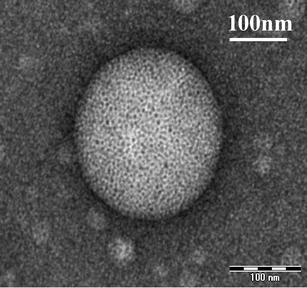Polymeric micelles in anticancer therapy: targeting, imaging and triggered release
- PMID: 20725771
- PMCID: PMC2982955
- DOI: 10.1007/s11095-010-0233-4
Polymeric micelles in anticancer therapy: targeting, imaging and triggered release
Abstract
Micelles are colloidal particles with a size around 5-100 nm which are currently under investigation as carriers for hydrophobic drugs in anticancer therapy. Currently, five micellar formulations for anticancer therapy are under clinical evaluation, of which Genexol-PM has been FDA approved for use in patients with breast cancer. Micelle-based drug delivery, however, can be improved in different ways. Targeting ligands can be attached to the micelles which specifically recognize and bind to receptors overexpressed in tumor cells, and chelation or incorporation of imaging moieties enables tracking micelles in vivo for biodistribution studies. Moreover, pH-, thermo-, ultrasound-, or light-sensitive block copolymers allow for controlled micelle dissociation and triggered drug release. The combination of these approaches will further improve specificity and efficacy of micelle-based drug delivery and brings the development of a 'magic bullet' a major step forward.
Figures






Similar articles
-
Applications of polymer micelles for imaging and drug delivery.Wiley Interdiscip Rev Nanomed Nanobiotechnol. 2015 Sep-Oct;7(5):691-707. doi: 10.1002/wnan.1332. Epub 2015 Feb 13. Wiley Interdiscip Rev Nanomed Nanobiotechnol. 2015. PMID: 25683687 Review.
-
Polymeric micelles as a new drug carrier system and their required considerations for clinical trials.Expert Opin Drug Deliv. 2010 Feb;7(2):145-58. doi: 10.1517/17425240903436479. Expert Opin Drug Deliv. 2010. PMID: 20095939 Review.
-
Polymeric micelles for anticancer drug delivery.Ther Deliv. 2020 Oct;11(10):613-635. doi: 10.4155/tde-2020-0008. Epub 2020 Sep 15. Ther Deliv. 2020. PMID: 32933425
-
4/6-Herto-arm and 4/6-mikto-arm star-shaped block polymeric drug-loaded micelles and their pH-responsive controlled release properties: a dissipative particle dynamics simulation.Phys Chem Chem Phys. 2019 Jul 10;21(27):15222-15232. doi: 10.1039/c9cp02411e. Phys Chem Chem Phys. 2019. PMID: 31250877
-
Preparation and biological characterization of polymeric micelle drug carriers with intracellular pH-triggered drug release property: tumor permeability, controlled subcellular drug distribution, and enhanced in vivo antitumor efficacy.Bioconjug Chem. 2005 Jan-Feb;16(1):122-30. doi: 10.1021/bc0498166. Bioconjug Chem. 2005. PMID: 15656583
Cited by
-
Advances in Targeted Drug Delivery Approaches for the Central Nervous System Tumors: The Inspiration of Nanobiotechnology.J Neuroimmune Pharmacol. 2017 Mar;12(1):84-98. doi: 10.1007/s11481-016-9698-1. Epub 2016 Jul 23. J Neuroimmune Pharmacol. 2017. PMID: 27449494 Review.
-
Combination Delivery of Alpha-Tocopheryl Succinate and Curcumin Using a GSH-Sensitive Micelle (PAH-SS-PLGA) to Treat Pancreatic Cancer.Pharmaceutics. 2020 Aug 16;12(8):778. doi: 10.3390/pharmaceutics12080778. Pharmaceutics. 2020. PMID: 32824299 Free PMC article.
-
Vectors for Glioblastoma Gene Therapy: Viral & Non-Viral Delivery Strategies.Nanomaterials (Basel). 2019 Jan 16;9(1):105. doi: 10.3390/nano9010105. Nanomaterials (Basel). 2019. PMID: 30654536 Free PMC article. Review.
-
Gemcitabine Combination Nano Therapies for Pancreatic Cancer.Pharmaceutics. 2019 Nov 4;11(11):574. doi: 10.3390/pharmaceutics11110574. Pharmaceutics. 2019. PMID: 31689930 Free PMC article. Review.
-
The role of size in PEGylated liposomal doxorubicin biodistribution and anti-tumour activity.IET Nanobiotechnol. 2022 Sep;16(7-8):259-272. doi: 10.1049/nbt2.12094. Epub 2022 Aug 18. IET Nanobiotechnol. 2022. PMID: 35983586 Free PMC article.
References
-
- World Health Organization: fact sheet cancer. http://www.who.int/mediacentre/factsheets/fs297/en/index.html. (accessed 10-12-09).
-
- Mishra B, Patel BB, Tiwari S. Colloidal nanocarriers: a review on formulation technology, types and applications toward targeted drug delivery. Nanomedicine. 2010;6:9–24. - PubMed
Publication types
MeSH terms
Substances
LinkOut - more resources
Full Text Sources
Other Literature Sources

